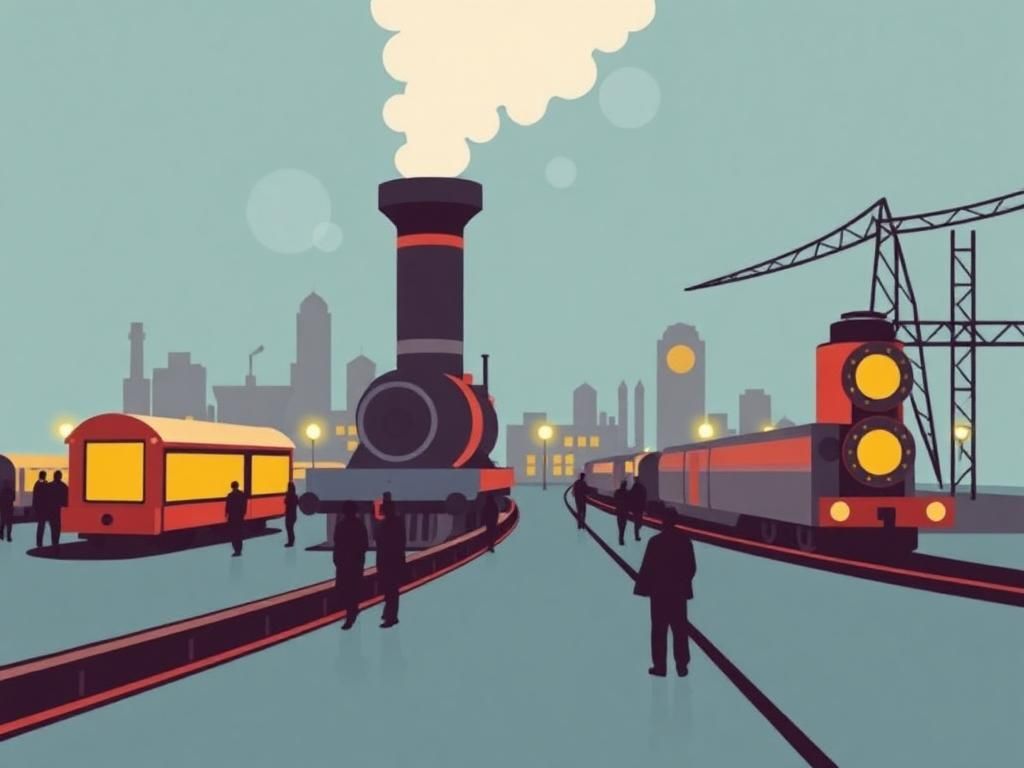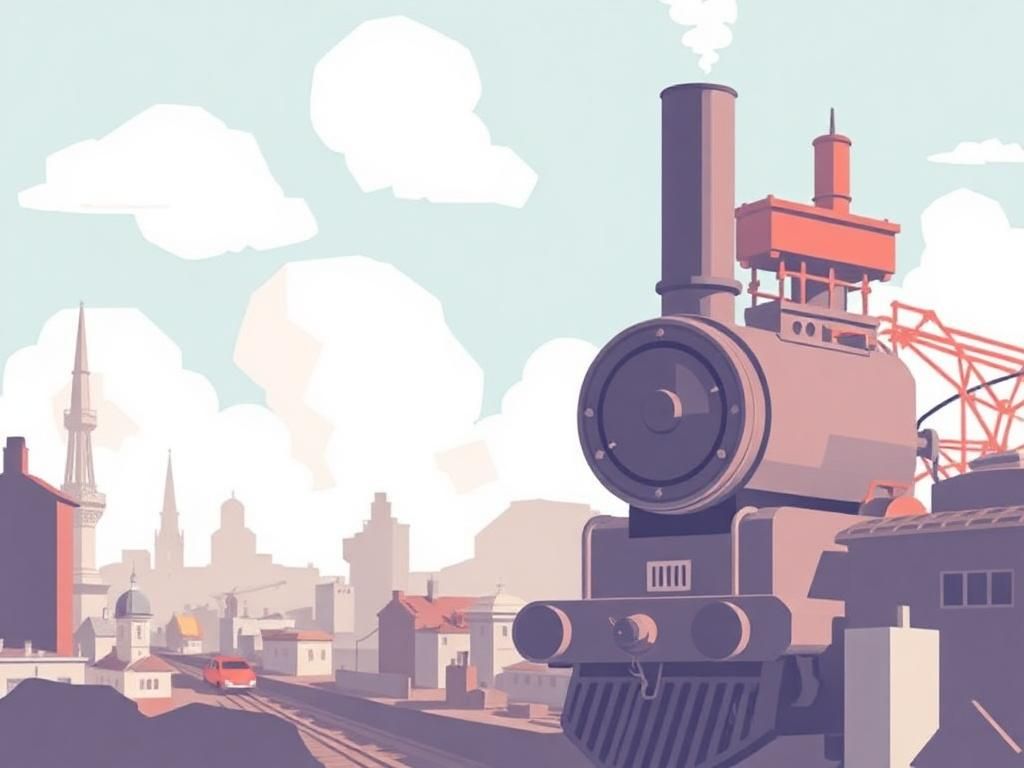The term steam east refers to the rich history and ongoing significance of steam technology in Eastern regions of the world. This unique aspect of steam culture has roots deeply embedded in the transformative power of steam as an industrial force, shaping economies, technological progress, and cultural identities. Given the focus on the fusion of steam technology with Eastern innovation, this exploration aims to shed light on its comprehensive historical, geographical, and modern implications.
Definition and Overview
Explanation of the term “Steam East”
Steam east embodies the applications and developments of steam technology originating from or significantly impacting Eastern Asia, particularly in countries like China, Japan, and India. This term encompasses everything from the early forms of steam engines to contemporary sustainable practices involving steam power.
Context of Steam East within the Steam Culture or Technology
Within the broader context of steam technology, “steam east” emphasizes the cultural, economic, and historical significance of steam in shaping Eastern societies. The legacy of steam technology has fostered an enduring relationship with innovation and industry, providing a lens through which we can examine not just technological advancements but also their intertwined cultural narratives.
Historical Background
Origins of Steam Technology
The origins of steam technology date back to ancient times, with early inventions like the aeolipile, a simple steam-powered device created by Hero of Alexandria around the 1st century AD. However, significant breakthroughs occurred during the Industrial Revolution, particularly in the Western world. Yet, Eastern societies began to adopt and adapt these technologies, leading to unique evolutions in their steam systems.
Influence of Geographical and Cultural Factors in the Eastern Regions
Geographical features, such as vast river systems and rich mineral resources, facilitated the growth of steam-powered industries in Eastern regions. Cultural factors, including a rich tradition of craftsmanship, also played a critical role. For instance, in Japan, the merging of Western steam technology with traditional artisan practices led to innovations that were distinctly Eastern.
Major Developments and Key Historical Figures
Several key historical figures contributed to the advancement of steam technology in the East. Notable inventors include Tanaka Hisashige from Japan, who designed and built advanced steam engines during the 19th century. In China, Qin Shi Huang, among others, symbolically utilized steam technology in various practical applications, highlighting its significance in Eastern innovation.
The Mechanisms of Steam Technology
Basic Principles of Steam Engines
At its core, the steam engine operates on the principle of converting heat energy from steam into mechanical work. Steam generation occurs within a boiler, where water is heated to produce steam. This steam then expands into a cylinder, moving a piston to produce motion. The basic mechanics of this process form the foundation of a variety of applications, from powering trains to driving machinery.
Components of a Steam Engine
A typical steam engine comprises several key components: the boiler, where water is heated; the cylinder, which contains the moving piston; and the crankshaft, which converts this linear motion into rotary motion. Understanding these parts is essential in grasping how steam engines function and have evolved over time.
Types of Steam Engines
Steam engines can be broadly categorized into early and modern variants. Early models, like those developed by James Watt, were primarily designed for stationary applications. In contrast, modern versions incorporate advanced materials and technologies, improving efficiency and reducing emissions. Common designs, such as the Stephenson locomotive, exemplify the transition in steam engine design, showcasing enhanced performance and innovation.
Geographic Significance of Steam East
Regions and Their Contributions
Countries such as China, Japan, and parts of India have made profound contributions to the development of steam technology. For example, China’s steam-powered ships revolutionized transport and trade along the Yangtze River, while Japan’s rapid adoption and enhancement of steam trains transformed its railway system. These regional innovations reflect the adaptability and significance of steam technology across Eastern Asia.

Case Studies of Significant Steam Innovations from These Regions
One case study that stands out is Japan’s Shinkansen, or bullet train, which utilizes principles derived from steam technology alongside modern engineering practices. This example illustrates how steam east has evolved from historical roots into contemporary marvels of speed and efficiency.
Economic Impact
The advent of steam technology markedly transformed the industrial landscape in Eastern regions. It powered various industries, facilitating the rise of manufacturing, textiles, and transportation. The expansion of trade routes, enabled by steam-powered transportation, boosted commerce and significantly altered economic structures. Cities arose around steam lines, immersing themselves in a new era of industrial growth.
Cultural Impact of Steam East
Steam Technology in Art and Literature
Steam technology has been a source of inspiration in Eastern art and literature. The imagery of steam engines traveling across vast landscapes resonates within cultural narratives; works like The Steam Engine by Yukio Mishima embody the intersection of technology and the human spirit. Themes of progress, adventure, and the triumph of human ingenuity are common in these artistic expressions, highlighting the cultural significance of steam in Eastern society.
Notable Works Influenced by Steam Technology
Several notable films, novels, and artworks draw directly from the fascination with steam technology. Films like Spirited Away feature steam-powered scenes that evoke nostalgia for industrial pasts while also emphasizing a unique Eastern aesthetic. Such cultural manifestations illustrate how steam east continues to inspire creativity and reflection.
Steam in Eastern Festivals and Events
Various cultural festivals across Eastern regions celebrate the heritage of steam technology. Events like the Steam Locomotive Festival in Japan gather enthusiasts and families to explore historical steam engines, celebrate manufacturing techniques, and engage in educational activities. These events not only preserve historical knowledge but also foster community interactions around shared cultural experiences.
Steam East in the Modern Era
Revitalization and Preservation Efforts
As societies increasingly value heritage and sustainability, numerous organizations and initiatives are devoted to preserving steam technology. Groups like the National Railway Museum in Japan dedicate efforts toward restoring historical steam engines and buildings, ensuring future generations can appreciate this vital component of industrial history.
Future Trends in Steam Technology
The future of steam technology appears promising, with innovations geared toward renewable and sustainable steam applications. There is a growing interest in using biomass and geo-thermal energy sources to produce steam. This innovative approach could lead to the development of greener steam engines that merge the traditional aspects of steam power with cutting-edge technology.
Challenges and Criticisms
Environmental Impact
Despite the benefits, traditional steam engines contribute notably to pollution and emissions. Burning fossil fuels releases greenhouse gases into the atmosphere, prompting a shift toward greener alternatives. Modern engineering challenges include reducing emissions while maintaining the operational efficiency of steam engines. The EPA highlights ongoing research into cleaner steam technology alternatives.
Economic Viability
Maintaining steam-operated systems presents various economic challenges. The costs associated with fuel, maintenance, and repairs can be significant when juxtaposed with more modern electric and alternative energy sources. This economic analysis reflects on the sustainability and future-proofing of steam technology within a rapidly changing global economy.
Conclusion

The Legacy of Steam East
The evolution of steam east encapsulates a legacy of technological progress, economic transformations, and cultural significance that continues to resonate today. Understanding its historical roots helps contextualize the ongoing relevance of steam technology in shaping modern societies.
Call to Action
Engaging with local steam heritage sites and initiatives can enhance appreciation for this rich history. Encouraged by the advancements in steam technology and cultural context, individuals are invited to explore resources and literature about steam east and its ongoing significance in today’s world.
References
- Steam: A History of Steam Technology
- The Story of Steam: 200 Years of Steam Power
- Encyclopædia Britannica
Frequently Asked Questions (FAQ)
What is Steam East?
Steam east refers to the significance and impact of steam technology in Eastern countries like China and Japan, showcasing its historical and modern developments.
How did steam technology originate?
Steam technology originated with early inventions, such as Hero’s aeolipile. Significant advances occurred during the Industrial Revolution, leading to widespread application across various industries.
What are the main components of a steam engine?
A steam engine primarily consists of a boiler, cylinder, and piston. These components work together to convert steam energy into mechanical work.
What were some significant steam innovations in Eastern countries?
Significant innovations include the development of steam-powered ships in China and the Shinkansen in Japan, highlighting the technology’s transformative capabilities.
What is the environmental impact of steam engines?
Traditional steam engines contribute to pollution and greenhouse gas emissions due to burning fossil fuels. Efforts are underway to develop greener alternatives.
What are some cultural impacts of steam technology?
Steam technology has influenced art and literature, with many works reflecting its themes of industrial progress and innovation, as well as inspiring various cultural festivals.
How can steam heritage be preserved today?
Organizations dedicated to steam preservation focus on restoring historical engines and facilities. Public engagement through festivals and museums also plays a key role in heritage conservation.
What future trends can we expect in steam technology?
Future trends may include renewable and sustainable steam applications, integrating traditional steam principles with modern technological advancements.
Why is steam technology still relevant today?
Despite the rise of electric and alternative energy, steam technology remains relevant for its historical significance and potential integration into sustainable practices.
What should I do if I want to learn more about steam history?
Consider visiting local museums, attending steam fairs, or exploring literature and resources focused on steam technology and its cultural significance in Eastern regions.
| Component | Function | Importance |
|---|---|---|
| Boiler | Heats water to generate steam | Vital for steam production |
| Cylinder | Holds the piston | Converts steam energy into work |
| Piston | Moves horizontally within the cylinder | Mechanically powers the engine |
| Crankshaft | Transforms linear motion to rotary motion | Essential for various mechanical applications |